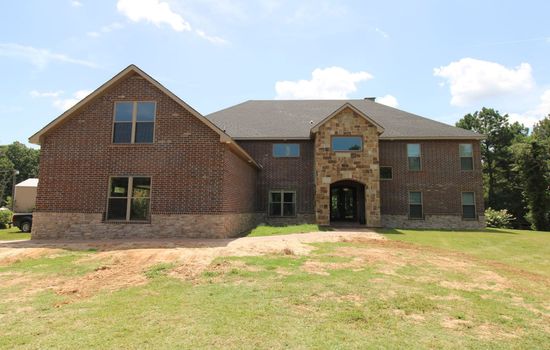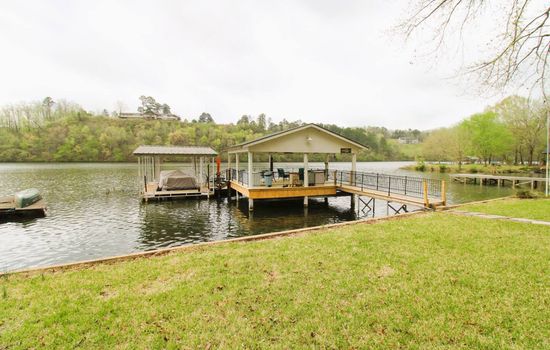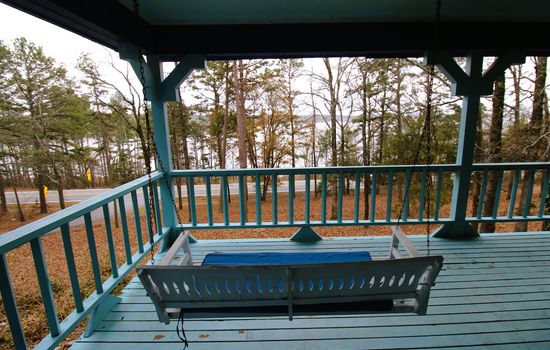The visitor center is open Tuesday through Saturday from 10:00 AM to 4:00 PM and is closed on Sundays and Mondays.
Admission to Little Rock Central High School National Historic Site is free, with no entrance fee or pass required.
From Dallas, take I-30 E to Little Rock, exiting at I-630 W, then Dr. Martin Luther King Jr. Drive, and turn right onto W. Daisy L. Gatson Bates Drive, a journey through history and civil rights landmarks.
Park at the free Visitor Center lot, with accessible spaces and areas for cars, RVs (14×40 feet), and motorcycles. No overnight parking, no fees.
Accessibility & permits
Emergency
- Cell service availability:Partial
Information not accurate?
Help us improve by making a suggestion.
Little Rock Central High School National Historic Site, situated at the intersection of Daisy L. Gatson Bates Drive and Park Street in Little Rock, Arkansas, is a poignant and powerful destination that embodies the turbulent history of the civil rights movement. This landmark, now a unit of the National Park Service since 1998, stands as a testament to the bravery of the Little Rock Nine, nine African-American students who attended classes under federal protection in 1957 amidst intense protests and opposition.
The school building, completed in 1927, is an architectural marvel, designed by renowned architects John Parks Almand, Lawson L. Delony, George R. Mann, Eugene John Stern, and George H. Wittenburg. It was once hailed as the most expensive school ever built in the United States. Today, it remains the only functioning high school within the National Park system.
Visitors can explore the park’s visitor center, which offers detailed exhibits, interviews, and news footage that vividly recount the desegregation events. The site is open from Tuesday to Saturday, offering free admission to all. The surrounding area is rich in history, with nearby Dunbar High School, which was constructed in 1929 for African-American students.
While the site itself does not offer the lush landscapes or wildlife typically associated with national parks, it is a significant cultural and historical hub. Nearby, Little Rock boasts a vibrant arts scene, beautiful outdoor spaces, and a variety of budget-friendly attractions. For those seeking to immerse themselves in the local culture, the city hosts various events and festivals throughout the year, including kid-friendly spring break activities and seasonal festivals.
Travelers can complement their visit with a stroll through the nearby artisan towns, exploring local businesses and outfitters that reflect the city’s eclectic charm. Despite its urban setting, Little Rock Central High School National Historic Site is an essential stop for anyone interested in history, civil rights, and the enduring spirit of resilience that defines this significant landmark.
- Area (mi²)
- 0.1
- Annual visitors
- 58 600
- Established year
- 1998
Top 3 Facts about Little Rock Central High School National Historic Site
The school’s construction required 36 million pounds of concrete and 370 tons of steel, showcasing its robust and enduring design, which has allowed it to remain operational since its completion in 1927.
This historic site, while not a traditional natural oasis, is surrounded by urban landscaping that hosts a variety of local bird species, including sparrows and robins. The grounds, though primarily manicured lawns, feature mature trees that provide shade and a serene backdrop to the school’s imposing architecture. The lack of extensive wildlife is balanced by the site’s significant cultural and historical importance, making it a unique blend of urban and educational heritage.
Surrounded by the rolling hills of the Arkansas River Valley, this historic site is set amidst a landscape characterized by the tranquil waters of the Arkansas River, which flows gently at an average depth of about 10 feet. The nearby Ouachita Mountains, though not towering, add a subtle backdrop with their gentle slopes and mixed hardwood forests, creating a serene and historically rich environment.
Family programs
- Junior Ranger
- Ranger-led Tours
- Self-guided Tours
- Workshops & Hands-on Activities
- Living History & Cultural Demons
- Scavenger Hunts
- Virtual Junior Activities.
Travel Tips
Plan Ahead
Visit during spring for mild weather. Book Ranger-led tours in advance. Park near the visitor center and plan for a half-day visit. Wear comfortable shoes for walking on paved paths. Pack a meal or eat nearby as options are limited. Attend the annual Civil Rights Symposium in September for added depth.
Pack Appropriately
Pack water, snacks, sunscreen, and a rain jacket. Bring a hat, sunglasses, and layers for varying weather. Don’t forget a camera and comfortable shoes. Consider a small first aid kit and spare cash. Check the season for specific gear needs.
Respect Wildlife
When visiting this urban historic site, respect local flora by staying on designated paths and avoiding litter. Keep noise levels down to minimize disturbance to urban wildlife, especially during breeding seasons. Use public transport or walk to reduce your carbon footprint.【END】
Stay Informed
Stay on designated paths, watch for uneven surfaces, and be aware of weather changes. Keep a safe distance from ledges and water. Check park rules and weather updates. For emergencies, call park authorities at 911 or the park’s emergency number. Stay hydrated and informed.
Seasons
Visit in spring when temperatures rise to the 70s and 80s, with mild weather perfect for exploring historic grounds. Attend the Spring College Presentation in March or the Senior Prom in April, immersing yourself in the vibrant campus life amidst blooming magnolias. Ideal time for outdoor tours and self-guided walks.
Visit in summer for warm temperatures (90s°F) and humid weather. Attend the Tiger Academy in July, a unique educational experience. Explore historic buildings, exhibits, and outdoor activities, but be prepared for the heat. Ideal for history enthusiasts and outdoor lovers.
Visit in the fall, when mild temperatures (60s-70s°F) and crisp air enhance the historic ambiance. Attend the 67th anniversary commemoration of the Little Rock Nine integration in September, a poignant event amidst the autumn foliage. Ideal time to immerse in rich history and cultural significance.
Visit in winter (Dec-Feb) for a serene experience amid mild temperatures (40s-50s°F). Crisp air and fewer crowds enhance the historical significance of this landmark, making it an ideal time for a contemplative and immersive visit.
Information not accurate?
Help us improve by making a suggestion.
Where to stay
Frequently Asked Questions
Ready to dive into what Little Rock Central High School National Historic Site has to offer? Let’s tackle some of the burning questions you might have as you plan your visit!
-
You should stay in Little Rock, Arkansas, to visit this historic site, which is located at the intersection of Daisy L. Gatson Bates Drive and Little Rock Nine Way (formerly Park Street).
-
Dogs are not allowed inside the buildings, but they can walk on the grounds as long as they are on a leash. Only service animals are permitted inside the buildings.
-
Parking is free at the site. There are no specific fees mentioned for parking, including for campers, trailers, or motorhomes.
-
On September 4, 1957, the Little Rock Nine, a group of nine African American students, were barred from entering Little Rock Central High School by the Arkansas National Guard ordered by Governor Orval Faubus. On September 23, President Dwight Eisenhower federalized the National Guard, but the students were still unable to attend classes due to violent crowds. It wasn’t until September 25, 1957, when Eisenhower sent U.S. Army troops, including the 101st Airborne, that the Little Rock Nine were able to begin regular classes at the school, despite ongoing harassment from white students.








